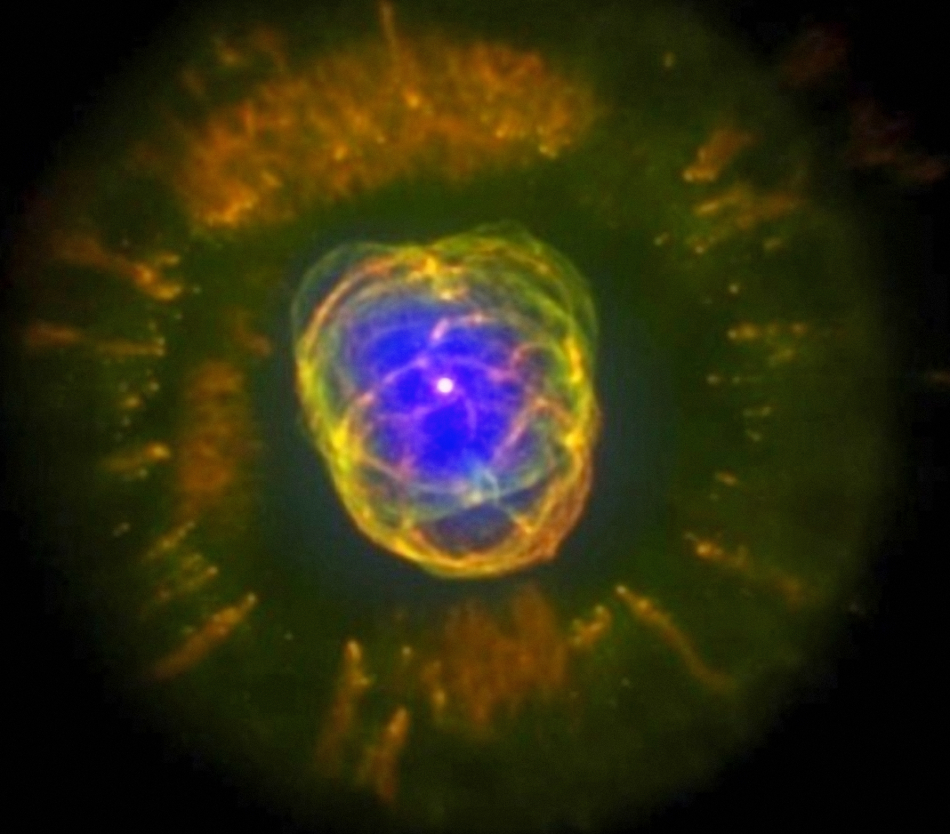
Editor's Note: As of Aug. 1, 2020, NASA no longer refers to nebula NGC 2392 as the "Eskimo Nebula," as it can be considered an insensitive and offensive term. More information at: https://www.nasa.gov/feature/nasa-to-reexamine-nicknames-for-cosmic-objects.
 Credit: ESA/NASA and M.A. Guerrero
Credit: ESA/NASA and M.A. Guerrero
Hot Gas Inside the Eskimo
Stars like the Sun, near the end of their lives, enter a phase in which they swell up to hundreds of times their former size. Deep within, the nuclear furnace, once such a stable source of power, starts to vary. The result is a series of pulsations that, over a brief period of time, drive away the outer layers of the star, leaving behind at the center a dead, dense, earth-sized diamond called a white dwarf, surrounded by an intricately sculpted cloud of gas known as a planetary nebula. One famous example is the Eskimo Nebula (shown above in a composite HST optical image and XMM-Newton X-ray image). The Eskimo is so-called since the extended, broken outer ring of emission is reminiscent of the fur on the hood of a parka. Planetary nebulae exhibit wide range of shapes, and, like the Eskimo above, often show strange lines and asymmetries whose origins are poorly understood. Some of the shapes of planetaries are believed to be produced by interactions of the wind from the central star and the extended surrounding gas. As the XMM-Newton image above shows, X-ray emitting gas (in blue) seems to fill the "face" of the Eskimo, and reveals to astronomers the importance of such interactions as the wind from the central star slams into the pre-existing ejecta and heats to X-ray emitting temperatures of millions of degrees.
Published: March 18, 2013
<
HEA Dictionary ● Archive
● Search HEAPOW
● Other Languages
● HEAPOW on Facebook
● Download all Images
● Education ● HEAD
>

Each week the HEASARC
brings you new, exciting and beautiful images from X-ray and Gamma ray
astronomy. Check back each week and be sure to check out the HEAPOW archive!
Page Author: Dr. Michael F. Corcoran
Last modified Monday, 26-Feb-2024 17:45:21 EST


